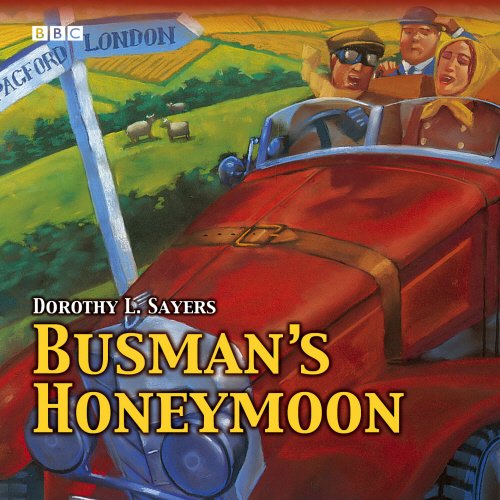
It has been said, by myself and others, that a love-interest is only an intrusion upon a detective story. But to the characters involved, the detective-interest might well seem an irritating intrusion upon their love-story.
Dorothy Sayers, from the Dedication to Busman’s Honeymoon
Last month I re-read Busman’s Honeymoon, the final Lord Peter mystery novel by Dorothy Sayers, perhaps my very favorite of the Lord Peter novels. Previously, I might have said that honor was reserved for Gaudy Night, but… having been married for 15 years Busman’s Honeymoon and its depiction of the beginnings of married love slightly wins over Gaudy Night‘s depiction of courtship— much though I love Harriet and Peter’s courtship.
In her review of Busman’s Honeymoon in Granta Caroline Crampton writes about the paradox of loving detective fiction not for the actual detecting, but for the other bits:
“For me, details like the victim, suspects, alibis, clues, footprints and so on are there as background. Like all formal boundaries, it’s when writers use them as an opportunity to colour outside the lines that things get interesting.”
As a reader of detective fiction I am very much of the same mind as Crampton: I read mainly for the characters and less for the actual detecting and mystery. And I love what Crampton says about Busman’s Honeymoon, that for her the main point of the book is really the love story, not the murder mystery. I am sure there are readers to whom the love story seems to get in the way of a really whopping good murder mystery, but I am not one of them.
Crampton’s analysis of the ‘other bits’ is also spot-on:
“The subtitle that Sayers gave this book is where its appeal lies for me, though – ‘A Love Story with Detective Interruptions’. As the title indicates, it covers the honeymoon taken by Wimsey and his new wife Harriet Vane, herself a detective novelist. They’ve chosen to spend it at an Elizabethan manor house in the countryside, eschewing more fashionable overseas trips in favour of convenience and anonymity. The hoped-for domestic bliss is blighted not just by a murder, but by more prosaic concerns like unswept chimneys and a lack of hot water.
What this book is really about, then, is two obstinate and mercurial people learning how to live with each other. Amid the domestic inconveniences, including the corpse in the cellar, Harriet and Peter thrash out what it means to be equal partners when absolutely nothing about their circumstances is equivalent.
‘This business of adjusting oneself was not so easy after all,’ Harriet muses just after the grisly discovery is made. ‘Being preposterously fond of a person doesn’t prevent one from hurting him unintentionally.’
I think Sayers just put the murder in to trick people into reading what is actually a very perceptive treatise about marriage and cohabitation. She captures something that is so rare to find portrayed well on the page: the serendipitous fusion of the mundane and the transcendent into a true love story.”
I had previously missed the delightful subtitle— it not appearing on the cover and me not being a careful reader of title pages. But the romance between Peter and Harriet is definitely one of my favorite literary love stories. I think this idea of the detective story as an interruption of the love story is a fascinating reframing by Sayers. Detecting, she implies, is not the true stuff of life. Murder— and the need to solve murders, to bring the killer to justice— is an interruption of the love story. A messy, unpleasant intrusion for the detectives, no matter how much delight it might bring to the readers.
The first story was a love story. Since Cain set upon his brother Abel, the love story has periodically been disrupted by the unpleasant business of murder; but in the beginning it was not so. This is not how the world was meant to be. And so the detective story, whose primary focus is always a restoration of justice into a world that has been torn apart by the horror of man killing man it is most appropriate that we say farewell to Lord Peter and Harriet Vane, the new Lady Peter, as they attempt to return to the primal order of the universe: man and woman becoming one flesh. The end of all detective fiction is to secure the civil order so that people can live and love and marry and have families.

[…] now that we’ve established that Busman’s Honeymoon is a love story with detective interruptions, let’s talk more about that love story. . . […]